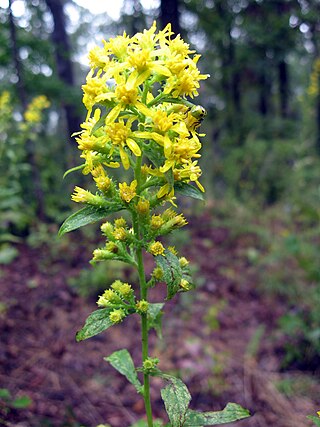
Schlumbergera is a small genus of cacti with six to nine species found in the coastal mountains of south-eastern Brazil. These plants grow on trees or rocks in habitats that are generally shady with high humidity, and can be quite different in appearance from their desert-dwelling cousins. Most species of Schlumbergera have stems which resemble leaf-like pads joined one to the other and flowers which appear from areoles at the joints and tips of the stems. Two species have cylindrical stems more similar to other cacti.

Centrolene buckleyi is a species of frog in the family Centrolenidae. It is found in Colombia, Ecuador, and Peru. Its natural habitats are subtropical or tropical moist montane forests, subtropical or tropical high-altitude shrubland, subtropical or tropical high-altitude grassland, and rivers. It is becoming rare due to habitat loss. It is named for the naturalist Samuel Botsford Buckley.

Agalychnis buckleyi is a species of frog in the subfamily Phyllomedusinae. It is found in Colombia and Ecuador. Its natural habitats are subtropical or tropical moist lowland forests, subtropical or tropical moist montane forests, and freshwater marshes. It is threatened by habitat loss.

Osteocephalus buckleyi, also known as Buckley's slender-legged treefrog, is a species of frog in the family Hylidae. It is found along the periphery of the Amazon Basin in Bolivia, Peru, Ecuador, Colombia, northeastern Brazil, Venezuela, Guyana, Suriname, and French Guiana, and also in the Orinoco Delta in Venezuela. It is probably a species complex. Some sources treat Osteocephalus vilmae from Ecuador and Peru as a valid species.

Pristimantis buckleyi is a species of frog in the family Strabomantidae. It is found on the Andes of Colombia and Ecuador. Specifically, it occurs on the both flanks of the Cordillera Central and on the eastern flank of the Cordillera Occidental in Colombia, and on the Cordillera Real in Ecuador south Cayambe, at elevations of 2,500–3,700 m (8,200–12,100 ft) asl.

Buckley's forest falcon, also called lesser collared forest-falcon and Traylor's forest-falcon, is a species of bird of prey in subfamily Herpetotherinae of family Falconidae, the falcons and caracaras. It is found in Bolivia, Brazil, Eucador, Peru, and possibly Colombia and Venezuela.

The Ecuadorian ground dove is a species of bird in the family Columbidae. It is found in Ecuador and Peru.

Quercus buckleyi, commonly known as Texas red oak, Buckley's oak, or Spanish oak is a species of flowering plant. It is endemic to the southern Great Plains of the United States.

The Andean laniisoma, also known as the Andean mourner, is a species of passerine bird in the family Tityridae. It occurs in humid Andean forests in Venezuela, Colombia, Ecuador, Peru and Bolivia. The species was formerly considered conspecific with the Brazilian laniisoma.

Hagnagora is a genus of moths in the family Geometridae erected by Herbert Druce in 1885.
Tradescantia buckleyi, commonly known as Buckley's spiderwort, is a species of flowering plant in the dayflower family, Commelinaceae. It is native to southern Texas in the United States as well as northern Tamaulipas in Mexico. The specific name honours Samuel Botsford Buckley (1809-1884), who collected the type specimen near Corpus Christi, Texas.
C. buckleyi may refer to:
Pseudatteria buckleyi is a species of moth of the family Tortricidae first described by Herbert Druce in 1901. It is found in Ecuador.

Solidago buckleyi, or Buckley's goldenrod, is a species of goldenrod native to central North America. It is an uncommon species with a small range, being found mainly in the Ozark Mountains of Arkansas and Missouri, and in the uplands near the confluence of the Ohio and Mississippi Rivers near southern Illinois and western Kentucky. There are also a few isolated populations reported from Indiana. Its preferred habitat is open oak woodlands.
Phlox buckleyi, common name swordleaf phlox or shale-barren phlox, is a plant species native to Virginia and West Virginia. It grows in open woodlands, primarily on hillsides derived from shale. The first known specimen was first collected in 1838 but not described as a species until 1930.
Marmylaris is a genus of longhorn beetles of the subfamily Lamiinae, containing the following species:

Hypericum buckleyi, known as Blue Ride St. John's wort and Buckley's St. Johnswort, is a rare species of flowering plant in the family Hypericaceae found only in the Appalachian Mountains of the southeastern United States. The species is listed in the state of Georgia (S1), South Carolina (SX), and North Carolina (S3).
Mecistogaster buckleyi is a species of damselfly in the family Coenagrionidae. It is found in South America.
Alopoglossus buckleyi, also known commonly as Buckley's shade lizard and Buckley's teiid, is a species of lizard in the family Alopoglossidae. The species is native to northwestern South America.











